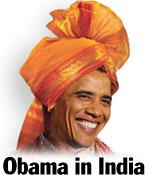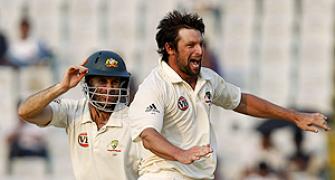
United States President Barack Obama will be in India on November 6 for his longest State visit yet. Apart from our own coverage, we provide you this one-stop blog of what the world media is saying about the visit and its significance
Sunday, October 31:
Obama's travel companion: Nuke launch codes
40 planes and six armoured cars: Obama visit to India the 'biggest ever by a US President', says this report in the Daily Mail, London.
And just in case the president is hard pressed to launch a nuclear attack on any enemy, 'The car also has the US nuke launch codes and the nuclear switch for the president. It can also withstand a chemical or germ warfare or even a bomb attack'
Will he utter the K-word?
Reminding its readers (and Obama) about the plight of visiting dignitaries who uttered the K-word during their India visit, Reuters, in its blog, says it is a question that cannot -- and will not -- be left to chance.
Is it PR? Is it diplomacy? It's a presidential visit!
The Miami Herald gives the low-down on presidential visits. Though it is five pages long, it is a thoroughly enjoyable read.
The China angle:
The arrival of Obama in Mumbai next weekend is a turning point in India's economic standing as a political and economic power, says the Telegraph, UK. Read it and decide for yourself if you agree or not.
The Hidden Dimension:
With the wall-to-wall coverage on all your TV channels, papers, Web sites (yes, that includes us) blogs, and tweets, is there anything new to be said about the Obama visit at all? The folks at News Blaze think there is and dig deeper to bring you the hitherto unknown Hidden Dimension of the visit.
The prospects:
'Why make the visit destinational, be content with the directional,' says this pedantic op-ed piece in Lebanon's Daily Star. Now you may ask us what in the world are we doing dishing out an editorial from a country that hardly matters in such matters. It's all in the byline. Check it out.
Eye on China:
China is looking at the visit with a wary eye. The US is looking at China with wary eye. India is looking at both of them with a wary eye. If you are into these sorts of analysis, then you would know it can be argued either which way till you are red in the eye. Though it is similar lines, this Christian Science Monitor report stands out for putting India's renewed interest in its Look East policy and the US's interests in the Asia Pacific region in perspective. There might even be some truth to it.









